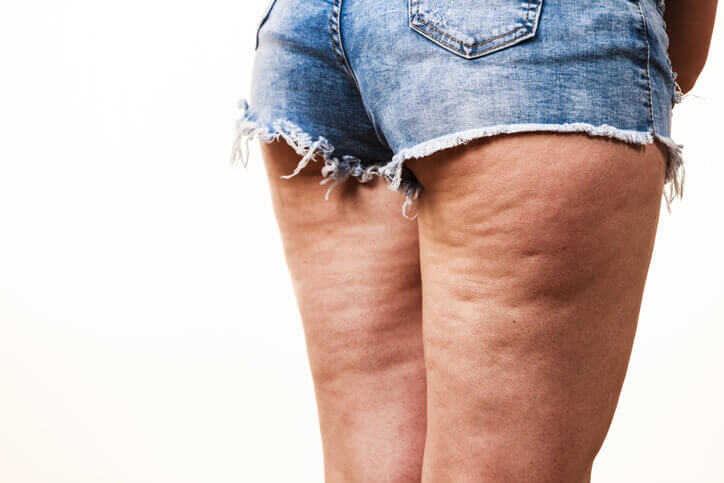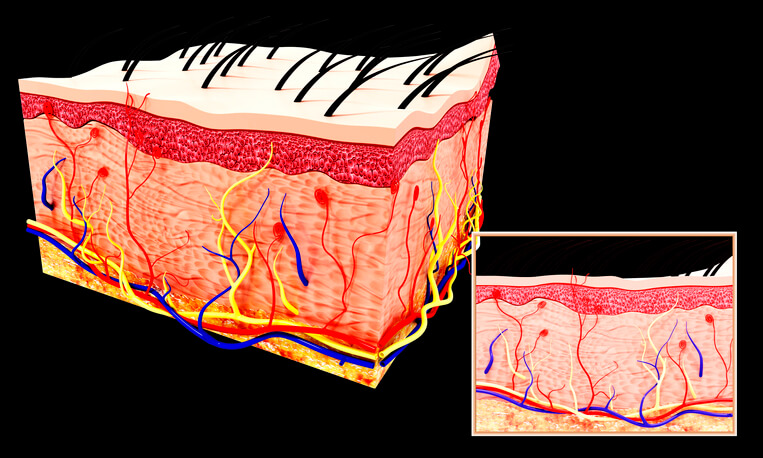Cellulite Got You Down? Learn How You Can Be Proactive
6 years ago | Proactive Health
By Joy Stephenson-Laws, JD, Founder
Cellulite is pretty common. Some physicians refer to it as edematous fibrosclerotic panniculopathy (EFP). Even celebrities and athletes, who we sometimes tend to think have “perfect bodies,” get it. For example, plus size model Ashley Graham posted a photo on Instagram of the cellulite on her thighs and buttocks area, with the caption, “I workout. I do my best to eat well. I love the skin I’m in. And I’m not ashamed of a few lumps, bumps or cellulite...and you shouldn’t be either.”
The problem with Ashley’s approach, however, is that while we should not be ashamed of a few lumps, there is some recent evidence which suggests that we should be concerned about cellulite.
Let’s face it, cellulite is not exactly a welcomed guest when it makes an appearance on our thighs and buttocks (where it tends to be more common) or anywhere else on our bodies. And if you have cellulite and don’t feel good about the way your body looks, it can affect your self esteem and mood. The good news is you can be proactive. Remember, it is important to most of us to both look and feel good.
Before we get into proactive steps you can take to prevent and treat cellulite, it is important to first understand what cellulite is.
So what is cellulite?
Cellulite is usually associated with fat, but this association may be misplaced when it comes to understanding what cellulite is. Cellulite has been defined as “a localized alteration of the contour of the skin in certain areas.” It appears as dimples on the skin, and it can be seen on many people on their hips, thighs and buttocks.
So what causes cellulite? A quick biology lesson might be in order.
For those of us who remained awake in biology class, we might recall the diagram which identifies the different layers of the skin.

There is the outermost layer of the skin, called the epidermis, which acts as a barrier against mechanical and chemical injury.
Then there is the next layer below the epidermis called the dermis. The dermis contains connective tissue and “is composed of a dense network of specialised proteins (collagen and elastin) organised into fibres of differing sizes and properties.” The dermis also includes a mix of blood and lymphatic vessels and nerves.
There is a third layer found under the dermis called the subcutaneous layer. This area contains a “network of collagen fibres and fat cells (adipocytes). . . It acts as a main storage site for fat and therefore energy.”
Reportedly, fat deposits (in the subcutaneous layer) “push and distort the connective tissues” beneath the skin and cause the appearance of “lumpiness, leading to the characteristic ‘cottage cheese’ changes in the appearance of the skin.”
The early stages of cellulite are associated with water retention. Apparently, fluids are retained in the connective tissue and cause a slowdown in local microcirculation and an increase in the volume of fat cells (adipocytes).
Here are a few potential causes of the insufficient circulation which may lead to an increase in the volume of fat cells and ultimately cellulite:
- Genetics: There may be a genetic predisposition (white race, female gender and family history).
- Hormonal changes. Cellulite is much more common in women than it is in men. According to one report, cellulite affects 90 percent of women and 10 percent of men. (Another report claims cellulite affects 98 percent of women). This may be due to decreasing estrogen levels in women as they age.
“Estrogen has an impact on the blood vessels. When estrogen starts to decrease, you lose receptors in blood vessels and thighs, so you have decreased circulation. With decreased circulation you get less oxygen and nutrition to that area, and with that we see a decrease in collagen production…. [Also, at this time] fat cells start becoming larger, [they] begin protruding through the collagen [and become the bumpy fat known as cellulite],” reports Scientific American.
It is also important to note that another reason why cellulite is more common in women is because a woman’s connective tissue is more structured like a “picket fence” while a man’s is more like a “cross-linked fence.” So a man’s connective tissue is better at holding the fat in.
Estrogen also makes fat whereas testosterone breaks down fat. So a woman's body is basically—and I hate to say it—genetically designed to be a place for cellulite to develop,” said the author of the Scientific American report.
And remember that the amount of estrogen contained in some contraceptive pills may lead to the onset of cellulite.
- Lifestyle.
Lifestyle plays a major role in the development of cellulite. A poor diet, which is a diet rich in ultra-processed foods, is definitely a risk factor for cellulite.
“Weight gain, itself, can make the appearance of cellulite worse. Weight loss and particularly significant weight loss, can make its appearance better,” reports Psychology Today.
A lack of exercise and leading a sedentary lifestyle may also cause cellulite. Smokers also tend to have more cellulite due to the way smoking can disrupt blood vessel flow and collagen production.
So how can you be proactive?
Obviously, one of the first things we can do is educate ourselves about what causes cellulite and to the extent that we are able to control those causes, we should.
Many women observe cellulite just before menopause, because that is the time when estrogen levels start to decrease. But we should also be aware of diagnostic techniques that may detect cellulite even in the earliest stages when it is not apparent to the naked eye.
There is a diagnostic technique called contact thermography with microencapsulated liquid crystal plates. These plates have been utilized in medicine at least since the 1970s.
Contact thermography identifies different images revealed by the thermographic plate. These images correspond to the “stages that cellulite is classified into and are distinguished by the presence or absence of colour spots expressing changes in temperature.”
It offers the important advantage of providing objective evidence about the progress of cellulite, so that targeted treatments and therapies can be applied individually. This technology makes it possible to:
- Detect cellulite from the earliest stages
- Identify with greater precision which areas need to be treated and insisted upon
- Devise the most suitable therapies and treatments for each case
- Monitor progress by checking responses to the treatments
Identify new technology like the Cryo T-Shock which improves circulation, reduces fat and improves collagen levels. It uses state-of-the-art thermography and cryotherapy (thermal shock) to reshape the body. Cryo T-Shock treatments destroy fat cells and increase skin collagen production during each session due to a thermal shock response caused by hot and cold temperatures. Each session takes about 60 min.
There are also specific foods that may help with cellulite, including:
- Saffron. The anti-inflammatory properties of saffron may increase circulation and discourage the expansion of fat cells.
- Dark berries (such as blueberries). These berries are full of antioxidants that may help with collagen production and improve the skin’s appearance.
- Dark chocolate. This treat is rich in magnesium and iron and may improve blood flow around the body, helping prevent or diminish the appearance of cellulite.
A good rule of thumb is to drink plenty of water and eat a lot of fresh fruits and vegetables.
Many people may also turn to cellulite treatments, such as laser therapy. If you are doing any of these treatments, make sure to discuss your options with a competent healthcare professional, and also know that there is not a single cosmetic treatment that can cancel out unhealthy eating and an unhealthy lifestyle.
Enjoy your healthy life!
The pH professional health care team includes recognized experts from a variety of health care and related disciplines, including physicians, attorneys, nutritionists, nurses and certified fitness instructors. This team also includes the members of the pH Medical Advisory Board, which constantly monitors all pH programs, products and services. To learn more about the pH Medical Advisory Board, click here.







